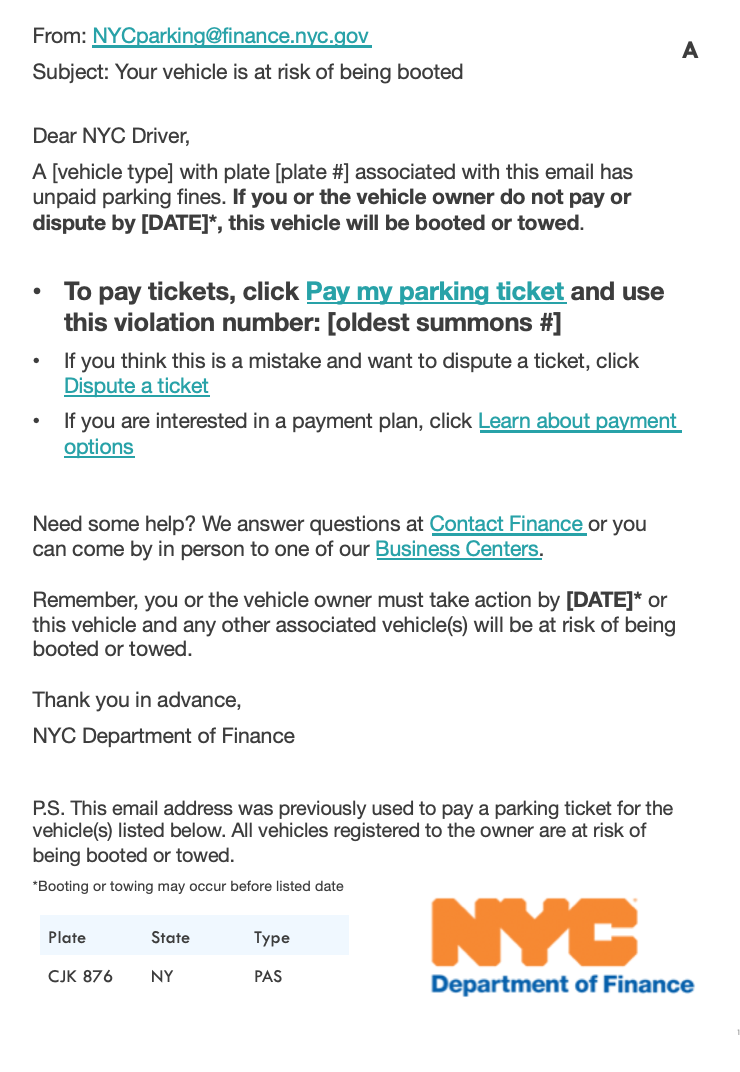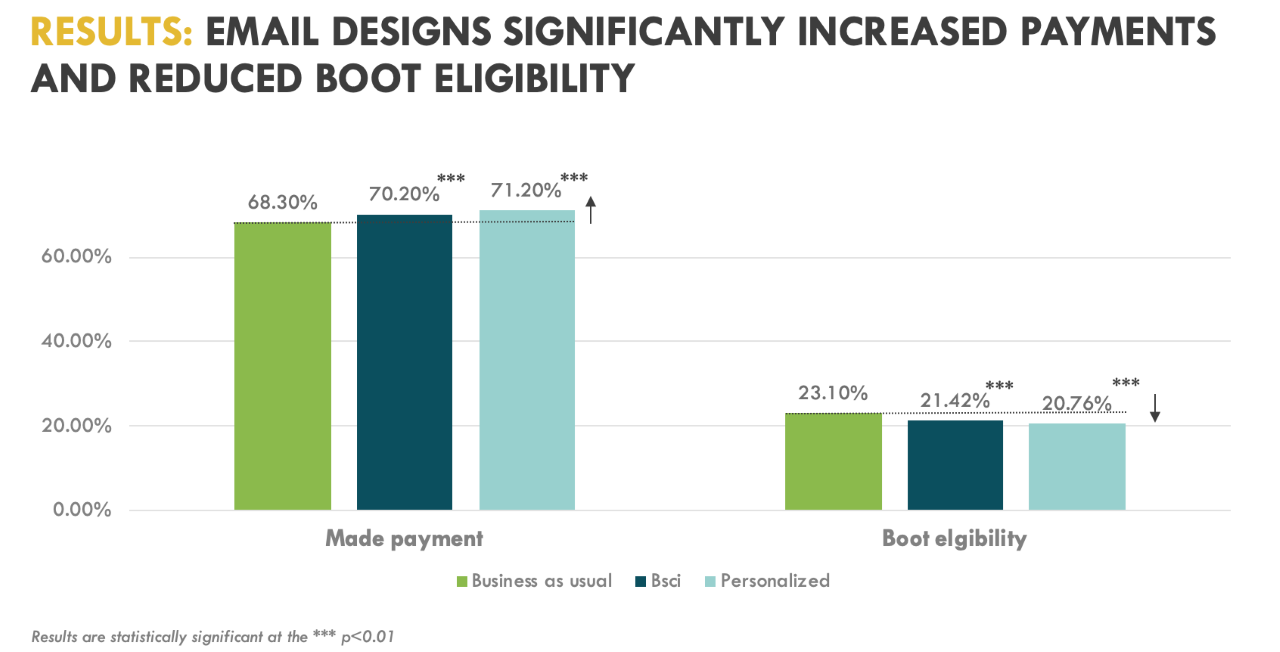7 Behavioral case study #2: Reducing vehicle booting among New York City drivers
About 8,700 NYC drivers become at-risk for booting or towing every month due to their unpaid parking ticket debt. If booted or towed, drivers must often pay over $700 to regain access to their car – an unanticipated financial cost that can be particularly burdensome for those living in low-to-moderate income households.1 Outside of the financial burden, losing access to one’s vehicle for any period of time can be disruptive – limiting the ability of those who rely on their vehicles to work and impacting drivers’ commutes.
To prevent this situation for drivers, the Department of Finance (DOF) sends warning emails to drivers approaching $350 in combined ticket fees and fines – the trigger for booting and towing – urging drivers to address their tickets. To improve the efficacy of the warning emails and lower the number of drivers eligible for booting, the DOF reached out to the New York City Behavioral Design Team (NYC BDT), a partnership between ideas42 and the NYC Mayor’s Office of Operations, to redesign the email.
For our redesign, we made changes to the email’s sender address, subject line, and text to increase the number of drivers who open the email, read the email in enough detail to understand how to address their tickets, and ultimately address their tickets.
Research and behavioral diagnoses
Our research identified two key insights about why drivers may not open the boot warning email – the first step to ultimately addressing their tickets:
- Since people have limited attention, drivers do not notice the boot warning email in their inbox or ignore it because it does not appear urgent compared to their other emails.
- Thinking you owe money can be painful, especially if you know it will be difficult to repay, so drivers “ostrich” and avoid opening the email about their impending booting.
Intervention design
In order to mitigate these behavioral bottlenecks, our team initially created nine new email prototypes to replace the status quo email that was being sent by the DOF. Each prototype consisted of a combination of a subject heading and an email body, with three variations for each, yielding nine possible variations in total. Then, via a pilot experiment that was run on Amazon Mechanical Turk, we revised and reduced the set of possible prototypes from nine to two (more details about this important step in Section 2).


Figure 7.1: Boot warning original letter (left) and redesign (right). Prototype A, one of the two email designs that were user-tested in the primary experiment. Prototype B is similar but does not personalize the first sentence. Compared to the control (previous figure): the language is simpler, the options available to the driver are clearly stated, the deadline is emphasized in order to encourage immediate action, and the tone is less accusatory of those who cannot pay.
For 12 weeks in the spring and summer of 2019, three boot warning emails (the two new prototypes plus one control) were sent to over 26,000 drivers who were approaching boot eligibility status in New York City. We then tested if drivers responded to the email intervention by paying or disputing their parking fines within two weeks after receiving them.
Results
The redesigned emails outperformed the business-as-usual email – on average increasing the number of users who paid within two weeks after receiving the email from 58% to 66-68%. As a result of these encouraging findings, the City has scaled our most successful behavioral design to all drivers approaching the booting/towing limit – helping thousands of New Yorkers to avoid booting or towing every year.

Figure 7.2: Results of the main experiment. “Control” refers to the email that was being sent by the DOF prior to our experiment. Prototypes A and B were proposed by ideas42, and differed by their degree of personalization. Both prototypes significantly outperform the control (p<0.001), but are not significantly different from from each other.
For example, a car owner who has $350 in parking summons judgments might also need to pay $80 in sheriff or marshal fees, as well as $200 in towing charges and nearly $140 in booting fees. Cumulatively, that car owner would need to pay well over $700 to regain access to their car.↩︎